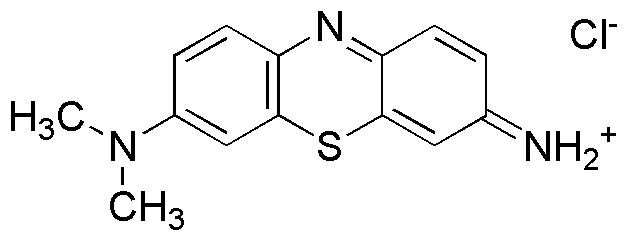Giemsa Stain is widely utilized in research focused on:
- Histology and Cytology: Commonly used for staining tissue sections and cell smears, it helps in identifying cellular structures and abnormalities, making it essential in diagnostic laboratories.
- Microbiology: Effective in differentiating between various types of bacteria and parasites, Giemsa Stain is crucial for identifying infections in clinical samples.
- Genetics: Employed in chromosome analysis, it aids researchers in visualizing chromosomal abnormalities, which is vital for genetic studies and cancer research.
- Forensic Science: Utilized in the examination of biological samples, it assists forensic experts in identifying blood and other bodily fluids at crime scenes.
- Pharmaceutical Research: In drug development, it is used to evaluate the effects of compounds on cellular morphology, providing insights into potential therapeutic applications.
General Information
Properties
Safety and Regulations
Applications
Giemsa Stain is widely utilized in research focused on:
- Histology and Cytology: Commonly used for staining tissue sections and cell smears, it helps in identifying cellular structures and abnormalities, making it essential in diagnostic laboratories.
- Microbiology: Effective in differentiating between various types of bacteria and parasites, Giemsa Stain is crucial for identifying infections in clinical samples.
- Genetics: Employed in chromosome analysis, it aids researchers in visualizing chromosomal abnormalities, which is vital for genetic studies and cancer research.
- Forensic Science: Utilized in the examination of biological samples, it assists forensic experts in identifying blood and other bodily fluids at crime scenes.
- Pharmaceutical Research: In drug development, it is used to evaluate the effects of compounds on cellular morphology, providing insights into potential therapeutic applications.
Documents
Safety Data Sheets (SDS)
The SDS provides comprehensive safety information on handling, storage, and disposal of the product.
Product Specification (PS)
The PS provides a comprehensive breakdown of the product’s properties, including chemical composition, physical state, purity, and storage requirements. It also details acceptable quality ranges and the product's intended applications.
Certificates of Analysis (COA)
Search for Certificates of Analysis (COA) by entering the products Lot Number. Lot and Batch Numbers can be found on a product’s label following the words ‘Lot’ or ‘Batch’.
*Catalog Number
*Lot Number
Certificates Of Origin (COO)
This COO confirms the country where the product was manufactured, and also details the materials and components used in it and whether it is derived from natural, synthetic, or other specific sources. This certificate may be required for customs, trade, and regulatory compliance.
*Catalog Number
*Lot Number
Safety Data Sheets (SDS)
The SDS provides comprehensive safety information on handling, storage, and disposal of the product.
DownloadProduct Specification (PS)
The PS provides a comprehensive breakdown of the product’s properties, including chemical composition, physical state, purity, and storage requirements. It also details acceptable quality ranges and the product's intended applications.
DownloadCertificates of Analysis (COA)
Search for Certificates of Analysis (COA) by entering the products Lot Number. Lot and Batch Numbers can be found on a product’s label following the words ‘Lot’ or ‘Batch’.
*Catalog Number
*Lot Number
Certificates Of Origin (COO)
This COO confirms the country where the product was manufactured, and also details the materials and components used in it and whether it is derived from natural, synthetic, or other specific sources. This certificate may be required for customs, trade, and regulatory compliance.

